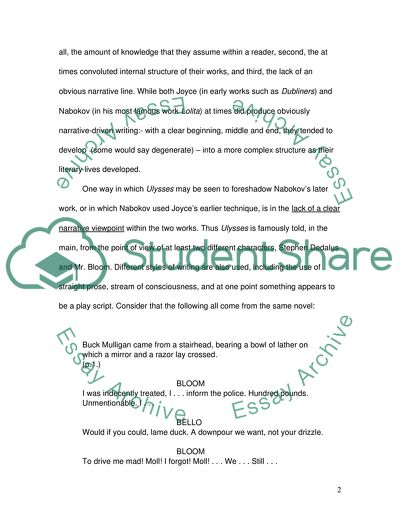Cite this document
(Each Text is Haunted by the Others Assignment Example | Topics and Well Written Essays - 2000 words, n.d.)
Each Text is Haunted by the Others Assignment Example | Topics and Well Written Essays - 2000 words. Retrieved from https://studentshare.org/literature/1707242-each-text-is-haunted-by-the-others-the-earlier-by-the-later-the-later-by-the-earlier-intertextuality-is-a-ghost-effect-discuss
Each Text is Haunted by the Others Assignment Example | Topics and Well Written Essays - 2000 words. Retrieved from https://studentshare.org/literature/1707242-each-text-is-haunted-by-the-others-the-earlier-by-the-later-the-later-by-the-earlier-intertextuality-is-a-ghost-effect-discuss
(Each Text Is Haunted by the Others Assignment Example | Topics and Well Written Essays - 2000 Words)
Each Text Is Haunted by the Others Assignment Example | Topics and Well Written Essays - 2000 Words. https://studentshare.org/literature/1707242-each-text-is-haunted-by-the-others-the-earlier-by-the-later-the-later-by-the-earlier-intertextuality-is-a-ghost-effect-discuss.
Each Text Is Haunted by the Others Assignment Example | Topics and Well Written Essays - 2000 Words. https://studentshare.org/literature/1707242-each-text-is-haunted-by-the-others-the-earlier-by-the-later-the-later-by-the-earlier-intertextuality-is-a-ghost-effect-discuss.
“Each Text Is Haunted by the Others Assignment Example | Topics and Well Written Essays - 2000 Words”. https://studentshare.org/literature/1707242-each-text-is-haunted-by-the-others-the-earlier-by-the-later-the-later-by-the-earlier-intertextuality-is-a-ghost-effect-discuss.


